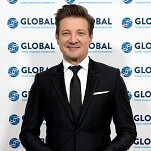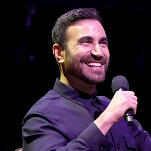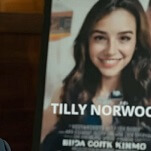Pop culture can be as forbidding as it is inviting, particularly in areas that invite geeky obsession: The more devotion a genre or series or subculture inspires, the easier it is for the uninitiated to feel like they’re on the outside looking in. But geeks aren’t born; they’re made. And sometimes it only takes the right starting point to bring newbies into various intimidatingly vast obsessions. Gateways To Geekery is our regular attempt to help those who want to be enthralled, but aren’t sure where to start. Want advice? Suggest future Gateways To Geekery topics by emailing [email protected].
Geek obsession: Universal horror films
Why it’s daunting: Beginning in the silent era, Universal established itself as the gold standard for horror, thanks to its association with Lon Chaney, plus a series of highly successful, artistically accomplished monster movies like Dracula (1931), Frankenstein (1931), The Mummy (1932), and The Invisible Man (1933). Then it just kept making them, churning out sequels, team-ups, and tangentially related movies that make it difficult to sort out where to start. (A brilliant Mr. Show bit served as a send-up for this situation.) And Universal’s horror films arrived in waves, which doesn’t make matters any simpler. The studio turned out monster movies throughout the 1930s, but sporadically and to diminishing returns after the departure of studio head and monster champion Carl Laemmle Jr. Universal horror enjoyed a renaissance in 1941 with the success of The Wolf Man, and again in 1954 with Creature From The Black Lagoon. In short, there’s a lot of Universal horror out there, and a lot of it isn’t as wonderfully horrific as might be hoped.
Possible gateway: The original Frankenstein, directed by James Whale and starring Boris Karloff
Why: Tod Browning’s Dracula kicked off the golden age of Universal horror movies in 1931, and it’s still chilling today, thanks to Browning’s eye for the macabre and great performances by Bela Lugosi as Dracula and peerless creepy sidekick Dwight Frye as Renfield. But it looks creaky and stagebound compared to Frankenstein. James Whale’s adaptation of Mary Shelley’s novel gets no points for faithfulness, but more than makes up for it with cinematic showmanship and a script that finds a sideways route way back to Shelley’s major themes.
Whale’s movie has been parodied endlessly—most memorably by Mel Brooks’ Young Frankenstein—but Whale’s combination of unsettling sets inspired by German expressionism, physical brutality, and surprising tenderness remains powerful. Colin Clive plays Dr. Frankenstein, a man so obsessed with reviving the dead that he postpones his wedding and takes to robbing graves. With help from his hunchback assistant—Dwight Frye again, playing a character named “Fritz,” not “Igor”—he successfully revives a body using a criminal’s brain. The resulting creature, played by Boris Karloff, is simultaneously brutish and childlike, capable of remorseless violence, but always motivated more by fear than hatred. In one of the film’s best scenes, censored for years, Karloff joins a little girl throwing flower petals in a pond to watch them float. Then he innocently decides to see if she’ll float, only to watch in horror as she drowns.
The tortured, sympathetic monster went on to become a staple of Universal horror. Monsters can be frightening, but a monster in which audience members can see something of themselves has a different kind of power. Frankenstein’s distrust of science pops up time and again. While there’s no mistaking the doctor’s stone castle-lab for anything resembling real science, Frankenstein and its successors captured a sense that the advances of science might be pushing humanity too far too fast, and possibly in the wrong direction. In the opening scene, Clive thoughtlessly throws dirt in the face of a statue of death, and his oft-delayed wedding suggests that his work, whatever its intentions, has disrupted the natural order of the world. Only disaster can follow.
Next steps: Whale’s 1935 sequel, Bride Of Frankenstein, is just as good, if not better. (Rowland V. Lee’s Son Of Frankenstein isn’t bad either.) The1932 Mummy features another tender Karloff performance in a film that’s more about lost love than creepy beasties. The Invisible Man and some of the off-the-beaten-path 1930s films like The Invisible Ray are well worth a watch as well. From the ’40s and ’50s, The Wolf Man and Creature From The Black Lagoon are both unmissable. A classic of a different sort, Abbot And Costello Meet Frankenstein, isn’t the most dignified use of the studio’s iconic creatures, but it’s one of the most inspired movies of the comedy team’s career. Finally, for further reading, there aren’t many books better than David J. Skal’s The Monster Show: A Cultural History Of Horror.
Where not to start: Universal horror inspired a whole culture of monster-movie fanatics, a culture that only grew when the movies hit television in the 1950s and the influential magazine Famous Monsters Of Filmland, edited by the late Forrest J. Ackerman, hit the stands. An endless parade of films like Frankenstein Meets The Wolf Man and House Of Frankenstein (featuring Frankenstein’s monster, the Wolf Man, and Dracula) kept this audience fed. While these movies are often fun, they aren’t great starting points. The cycle has few real duds, but the ones it does have are pretty duddy. The correct answer to “Do you want to watch She-Wolf Of London?” is “No.”







































